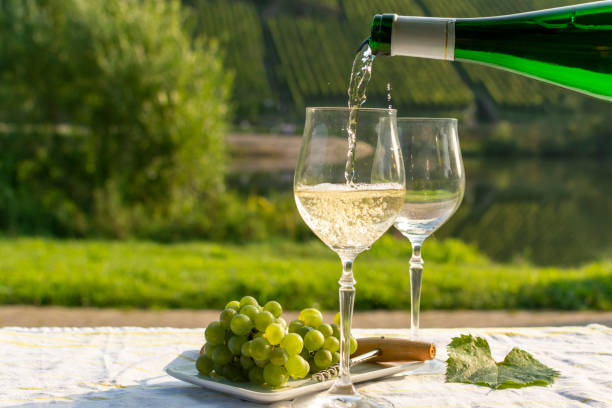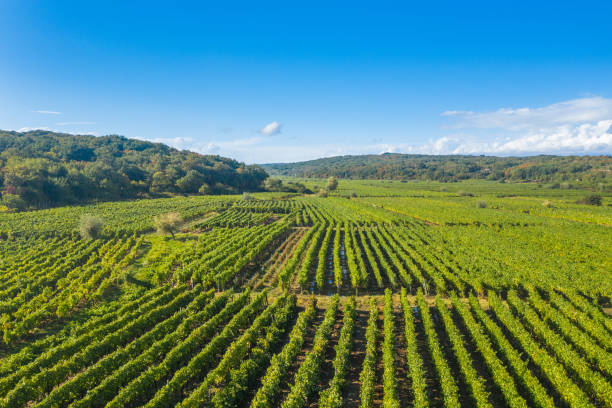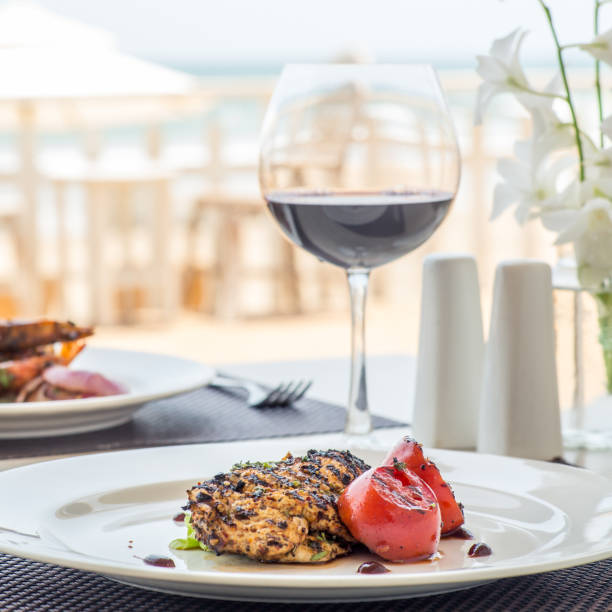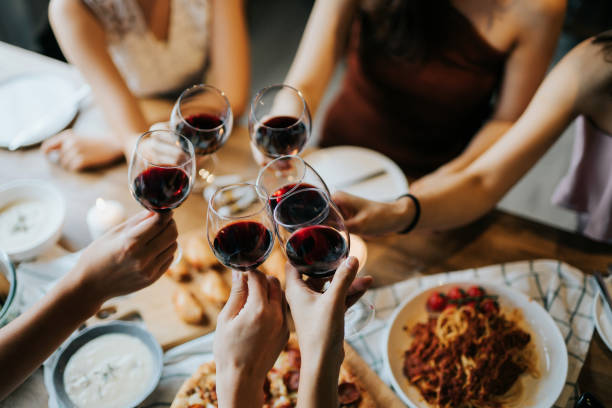Soon after the World Health Organization declared COVID-19 a pandemic worldwide on March 11, 2020, many U.S. states and local governments began issuing orders to severely restrict a winery’s ability to run its tasting room, as it did before the pandemic. California, Oregon, and Washington had all issued orders that effectively closed down winery tasting room operations before the end of March. The orders were in effect in most places until the middle or late May.
The United States’ wine-tasting rooms are important for the industry as well as the economies of the regions where wine tourists travel. Wine Institute estimates that California’s wine regions welcomed over 23.6 million visitors in 2015, who contributed $7.2 billion to its economy. Wine tourists tend to be well-educated, wealthy, and eager to buy wine after experiencing “pleasure.” (Bruwer & Rueger Muck, 2019).
In 2021, there were more than 11,000 wineries in the U.S., and over 80 percent of them produced less than 5,000 cases per year. (Sovos ShipCompliant, and Wines Vines Analytics 2022, page 3). The success of smaller wineries is heavily dependent on DTC sales, particularly through tasting room sales. (Haverila et. al., 2010; Shapiro & Gomez 2014). In 2021, the tasting room was responsible for 29% of all sales. (Silicon Valley Bank 2022, page 21) . Tasting rooms are responsible for almost two-thirds of all sales. This is because customers who purchase wine through wine clubs, mailing list subscriptions, online orders, or phone calls first visit the tasting room.
Wineries that were able to resume in-person tastings after months of being closed due to COVID faced a number of restrictions. These included being unable to serve customers indoors, having to create a proper social distance between parties, restricting party size, needing reservations, and limiting capacity to 25 percent. Wine club events like pick-up parties were no longer an option. Travel and lodging restrictions, as well as concerns over the risk of COVID-19 infection, kept away potential visitors, further reducing direct-to-consumer wine sales. Wineries realized they had to find innovative ways to reach out to their customers and sell them wine.
Wine tastings can be done online by some wineries, just as many people do for school, business, and social gatherings. Virtual wine tastings had been relatively unknown before the pandemic. Virtual wine tastings were made possible by the pandemic, which created a demand and provided a unique opportunity. We saw the number of virtual tastings increase dramatically in the first few months after the pandemic. Virtual wine tastings have been implemented by most wineries quickly and on a trial-and-error basis.
Virtual wine tastings came in a variety of formats and took on different forms. Virtual wine tastings all had two things in common: they were webcast over the internet and featured wine. In virtual form, wine tastings are no longer restricted to wineries and businesses such as wine bars. Virtual wine tastings could be sponsored and hosted by stores, businesses, and other organizations.
Many wineries have turned to the Zoom platform, which is seemingly everywhere, to provide virtual wine tastings. Zoom gave wineries the option to ask participants to register, which allowed them to collect valuable data like contact information or the geographic location of the participant or any other customer already recorded in their system. Some wineries used Facebook Live or Instagram Live, which allowed better integration with social media accounts. However, people were able to participate anonymously. Some businesses, like wine.com, invested in developing a proprietary system to host virtual tastings. Wineries did not charge for the virtual tasting, but some required that you purchase wine to access the webcast.
Virtual wine tastings are a far cry from the real-life events they were meant to replace. Participants were not allowed to pour the wine, ask questions, or be left alone with their wine. Most of the elements that visitors to tasting rooms normally experience were either absent (e.g., the facilities were clean and neat; employees served in a timely fashion) or they took on a different form (e.g., the lighting was appropriate; the employees were knowledgeable and skilled).
The host did not have to be able to supply the wine featured in the virtual tasting to the participants. A virtual tasting is filled with things to see and listen to. The host was unable to customize the virtual wine tasting for individual guests. Virtual wine tastings were presented more as a broadcast rather than a traditional hospitality event.
In our discussions with wineries, they indicated that they thought it would be necessary to do more than just an online version of the standard wine tasting in order to keep the consumers interested and engaged during the one-hour event. The wineries also wanted to experiment with what type of virtual wine tasting appealed most to their target audience and would encourage repeat virtual visitors. They also wanted participants’ perceptions of service quality.
The majority of virtual tastings are webcast live. Very few virtual tastings were available only as recordings. Some hosts recorded live webcasts and posted them on platforms like YouTube or Vimeo. Others uploaded the videos to their websites. Others used webcams and standard lamps or room lights. Some invested in lighting and sound equipment, while others used a webcam. Some hosts created elaborate sets, while others used the winery’s barrel room, outdoor patio, or the winemaker’s living room as the location. Some virtual tastings encourage audience participation, while others are essentially view-only events.
Schramsberg Vineyards in Calistoga featured a variety of special guests. This included a charity event with the owner of the San Francisco 49ers and celebrity winemaker Celia Welch. Alpha Omega Winery, St Helena, offered recipes from chefs and tips on food pairing. One of their first virtual wine tastings had a luau-themed theme, complete with a stage, set, design, chefs, and entertainers, all located at the picturesque winery. Blue Ostrich Winery in North Texas shipped snack-size bottles of wine along with the wine, and their co-owner was a DJ who played music at many virtual events. (Conover 2020). Conover’s (2020) ezine article and Denig’s (2022) blog post give a good idea of the wide range of virtual wine-tasting methods.
Wineries, wine shops, and wine clubs that are not wineries have discovered a new way to advertise, sell, and get orders from existing and new clients. According to Addie Wallace of wine.com’s Brand Manager, “virtual samplings were hugely popular right out of the box” (Conover 2022, pp. 2, 17). Some wineries have dropped virtual wine samplings once visitors returned to the tasting rooms, but others continue to offer them as a way to engage their customers as well as as a sales channel.
This paper is an exploration of what makes virtual wine tasting most appealing to participants in the United States. Numerous academic studies have examined the experiences of tasting room visitors and wine tourists in general. These studies were conducted from various perspectives. We used the concept of winery tours as a hedonic experience as the framework of our research on virtual tastings. We also applied the experiential view that was first applied to wine tourism in Bruwer and Alant (2009). We are the first to study virtual wine tastings. This paper is the first to use the experiential view in an online setting.
LITERATURE REVIEW
Wineries can use the tasting experience to build relationships with customers to foster commitment and loyalty (Nowak & Newton, 2006); connect with a younger generation of wine drinkers in order to establish long-term profitable relationships based upon continued patronage (Nowak et al., 2006); and show brand loyalty (Bruwer et al., 2013; Fountain et al., 2008). Wineries must understand the visitors’ expectations in order to achieve any of these goals.
Pan et al. (2008 ) discovered that an atmosphere of pleasantness created by exterior and internal features, design, information displays, and staff appearance and demeanor strengthens the customer’s affective commitment, which leads to a stronger intention for repeat purchases. McDonnell and Hall (2008) demonstrated the utility and effectiveness of a framework for servicescapes at winery cellars and developed a tool to help wineries evaluate their servicescape attributes. However, neither study explicitly applied an experiential view of wine tourism or considered its hedonistic nature.




